We made a real-time remote workplace… and people love it.

Yes, yes, we're heretics and an affront to the remote work ethos which says, repeatedly, "You should be communicating asynchronously."
The thing is, we tried async for several years because it enabled us to work across continents. We just got so…
Tired. Tired of spreading decision-making out over days/weeks. Then cramming all of our complex collaborative work into our two hours of overlap (and then skipping dinner to get 1 more hour). Tired of having wickedly smart interns/new-hires, but knowing that they weren't getting the hands-on, pro-active onboarding experience they deserved. And mostly, tired of not having room to have fun together.
Yeah, I said it. I want to have fun at work. Let /r/antiwork burn me at the altar of their apathy. Maybe it's because I'm a game developer, but I think work should be fun and professional.
How it Happened
When Gamebreaking started, we were remote by necessity. It was pre-pandemic (2019), but our founders were split between LA and Dublin. We had a conventional remote work model: video calls, Slack Messages, and Google Docs. We were decidedly "asynchronous," and it wasn't at all new to us. Our founders all knew each other from a project we'd built over 5 years in a purely async-remote fashion.
Then the pandemic hit, so we stayed the course on async remote work. By the time spring of 2021 rolled around though, it was clear to us that async remote wasn't creating the close team environment we wanted. On top of that, we were getting very tired of cramming every kind of human interaction into "low-bandwidth" communication via text messages or truncated conversations during our precious overlapping hours.
Maybe some of you engineers have had the following experience.

You sit down at 9 am to an email about a failed server deployment in China last night. A couple hours into debugging, you're blocked by some access issue that only somebody in China can fix. After a couple hours of trying to recreate the environment locally, you give up. You schedule a video call with your overseas counterpart for 7pm here, early morning there. By midnight, plates of unfinished food covered your desk and screenshots of terminals paper your computer's desktop. Worst of all, the problem still isn't fixed.
Have you been there too? This is how things naturally devolve when you force too much communication to be asynchronous. When you're working on something without clearly defined boundaries, or off-the-beaten path, then you either let it happen slowly, or you cave in and use synchronous communication. Mix an async communication culture with a tight deadline and you've got yourself a potent cocktail for crunch.
So We Started to Experiment
- At a client team's request, I tried all-day Google Meet calls. This was the polar opposite of async, but 8 hours of hot cam/mic gave me anxiety
- We tried Discord + muted "hangout" calls. This was decent, but the presence felt "off" – you either got disruptive cross-talk or radio-silence and opting in/out was awkward
- Once, we tried an orientation for our interns in Mozilla's Hubs – "virtual 3D worlds in your browser" – this sparked some genuine joy, but it was impractical (CPU performance-wise and logistically with 3D environments)
- Finally, we tested a 2D virtual office called Gather
Discovering the Keys to Real-time Work:
Shared Space, Spontaneity, and Presence
Below is a picture of our first office in Gather, a 2D virtual office on the web. It has proximity voice/video and private spaces for desks and meeting rooms. They also let you design your office, customize your avatar, and press F to throw confetti. That confetti button is actually pretty important, but we'll get to that. It was at this point that joy began to re-enter our workplace organically.
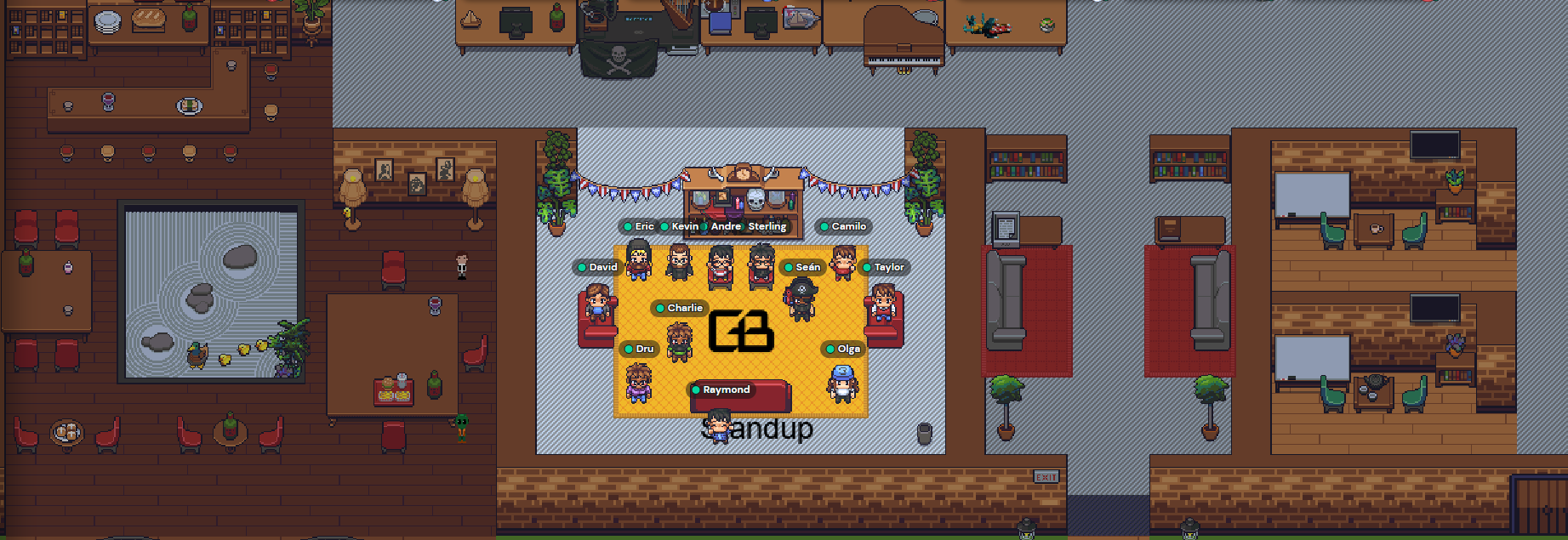
Disclaimer: before I sing Gather's praises (and I will do so loudly), I have to say that this isn't an ad for Gather. Maybe if they offered to waive our digital rent though… ;)
Back in our office, we began to rediscover the joys of real-time work. In async remote work you usually have two options to start a conversation: schedule a formal meeting on the calendar or Slack somebody with no idea when they'll respond.
In our Gather office, there's an in-between option: just walk over to their desk. I know if others are around, and they are subtly signaling things to me. Asking me to follow? "Let's grab a room." Sitting in a designated AFK stall? "I'll be back later." Throwing confetti at my desk? "Can I come in?"
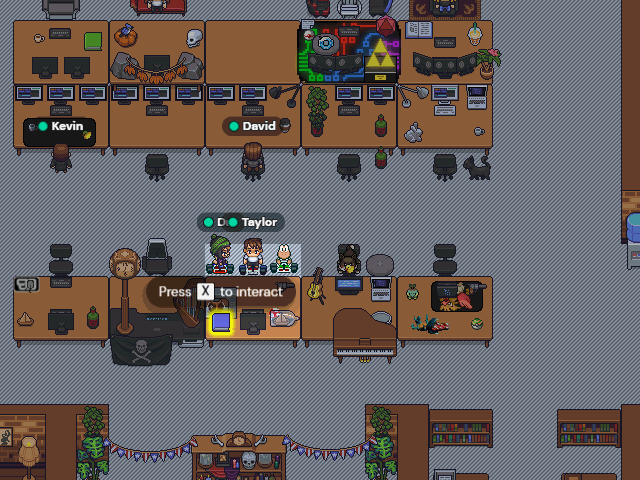
In traditional (async) remote work, there is no shared space. Through video calls, I get a tiny porthole into your personal space, and you get a porthole into my personal space. There's nothing visible or tangible about our working environment that we can shape together.
In real-time remote with a virtual office tool like Gather, shared spaces pop up organically, get decorated collaboratively, and are surrounded by equally creative individual spaces. Is it chaotic? Sure. Is it ours? Absolutely.
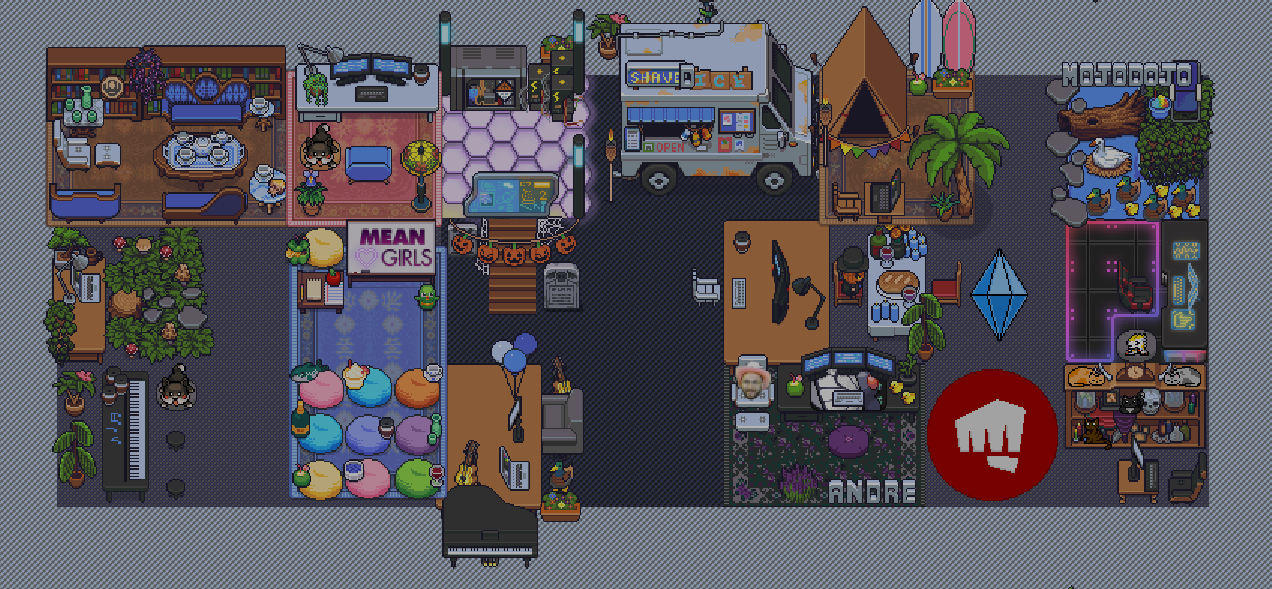
In async remote, there's very little spontaneity. When something is spontaneous, it is almost always a work-related one-on-one (call) or low-bandwidth (Slack channel).
But if somebody starts a perpetual motion machine behind your desk to celebrate completing a project, you're going to notice. You might even join in (I know I did). If somebody orchestrates a mid-day project pivot, you'll see them gathering the team and you can just jump in. Think about how rare that is in traditional remote work and how common that is in an office (or virtual office ;) ).
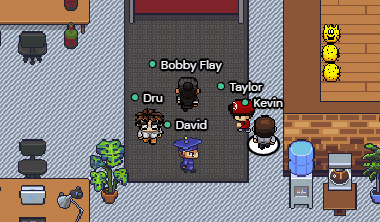
Having a simulated environment gave us access to more of the shorthand we've developed over millennia of IRL communication and decades of gaming in online worlds. This was the missing piece, and gave me the confidence to commit to fully remote over two years ago. Originally headquartered in California, we began hiring across the U.S. from Los Angeles to New York.
Growing into Real-time Remote
Our Gather office was crucial, but over time we realized the philosophy of real-time remote reached well beyond one tool.
Core Working Hours Improve Real-time Collaboration
Having a shared remote space was great, but when our first east coasters joined, we still had too few naturally overlapping work hours. We had to strike a compromise. West coasters would wake up a little earlier, and east coasters would stay a bit later, but both would be able to choose when to work their remaining time. We achieved reasonable core working hours of 8:30 am - 3:00 pm (Pacific Time), barring lunch and the needs of being a functional adult in society.
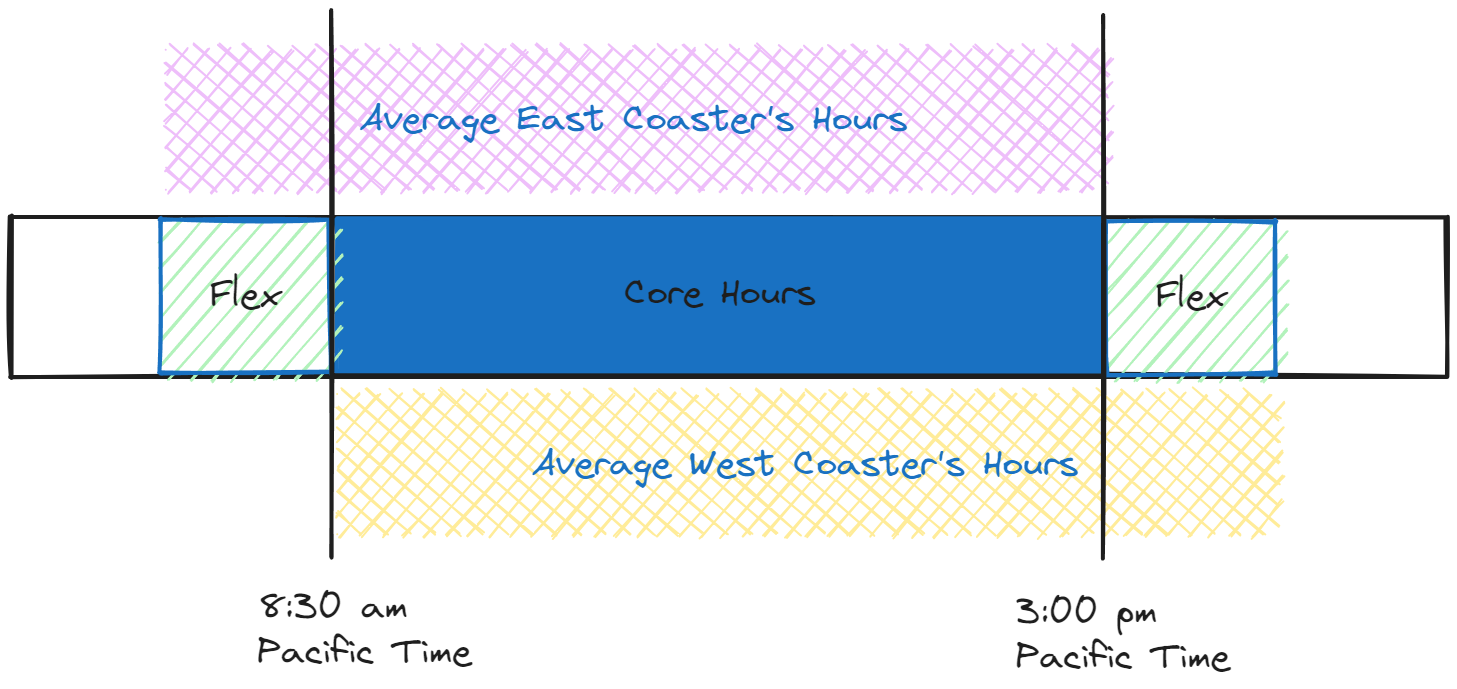
Company Retreats Build Lasting Relationships
Months later, in the brief, bright summer before the Delta wave hit, we packed our small team into an AirBnB for an in-person company retreat. The relationships we built were worth every penny, even as a bootstrapped company. We've been doing it annually ever since.
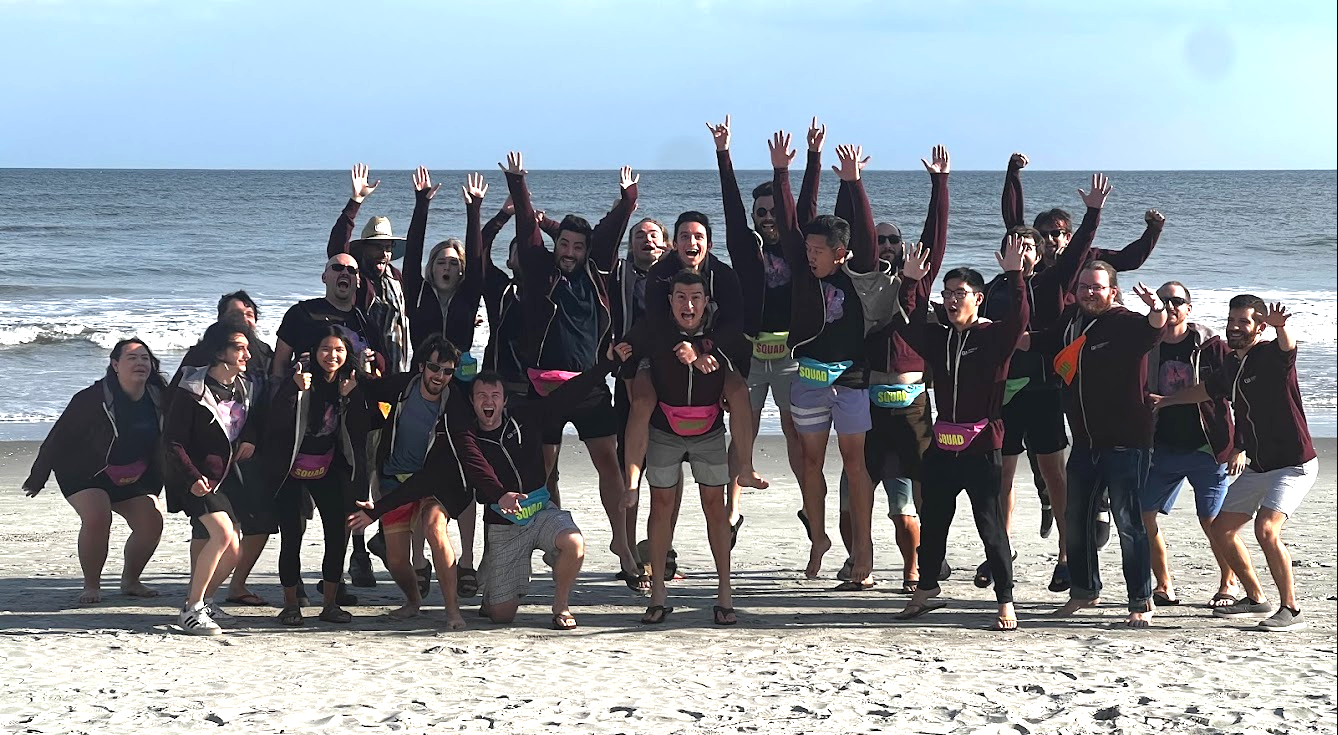
Whole team photo from our latest company retreat in 2023.
Does fully remote include overseas?
Our most glaring problem was also the hardest to solve: our founder in Europe. He was unable to reap most of the benefits of our new working style. This became especially clear as we began to build a team around him and the product he had created with BespokeCI. Onboarding new members was slow, getting the team on the same page was hard, and handoffs were tricky. These weren't problems we were having because he was outside the US, it was strictly a problem of insufficient real-time interaction.
What about countries in closer time zones?
Eventually, he made the hard decision to move to Canada, within 2 time zones of his team instead of 6+. Around that time we also got an exciting application from a talented and passionate developer in South America. The time zones matched so we wouldn't have the same problems we had working with Europe. We already had the tools to employ people internationally from our founder's time abroad (shoutout to https://www.deel.com). As long as they could show up in our virtual office, and speak fluent English with the rest of the team, why couldn't we hire them?
The boundaries of our work philosophy were really solidifying. Things that prevented real-time collaboration or a healthy lifestyle, like working with far-flung time zones, were a hard "no" from us. Remote work? Multinational employees? Those were "implementation problems" to be solved with the right tools.
Problems in Paradise
"Congratulations, Dru. You've recreated a physical office online. You now have all the problems of remote work as well as all the problems of a physical office."
In a couple ways, this is true. In the most amusing scenario, we literally had to plan and execute an office expansion in 2022 for our virtual office.
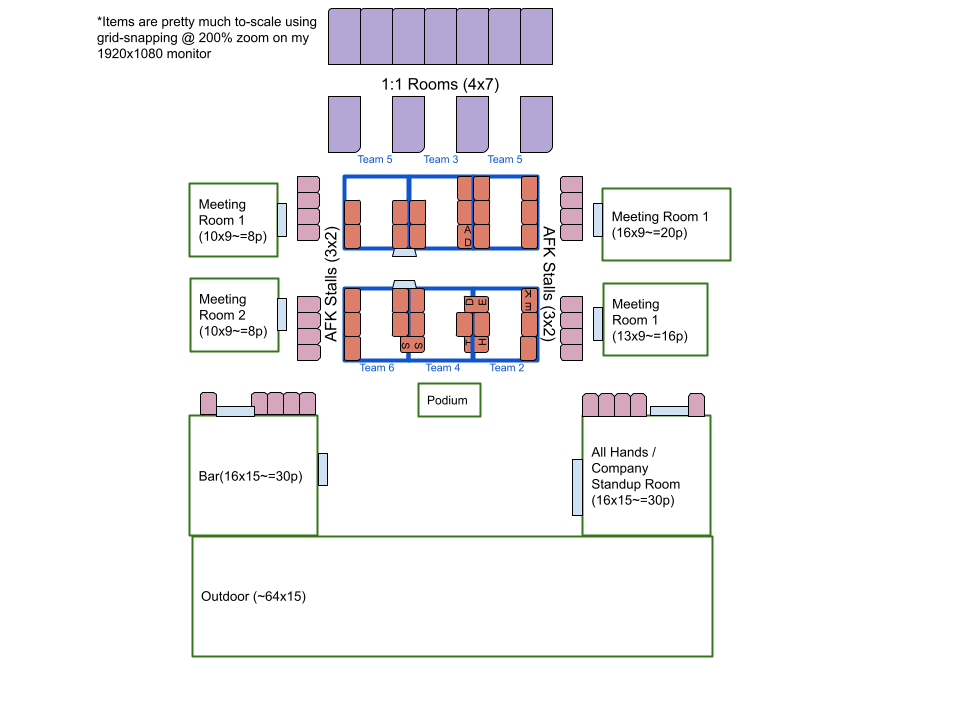
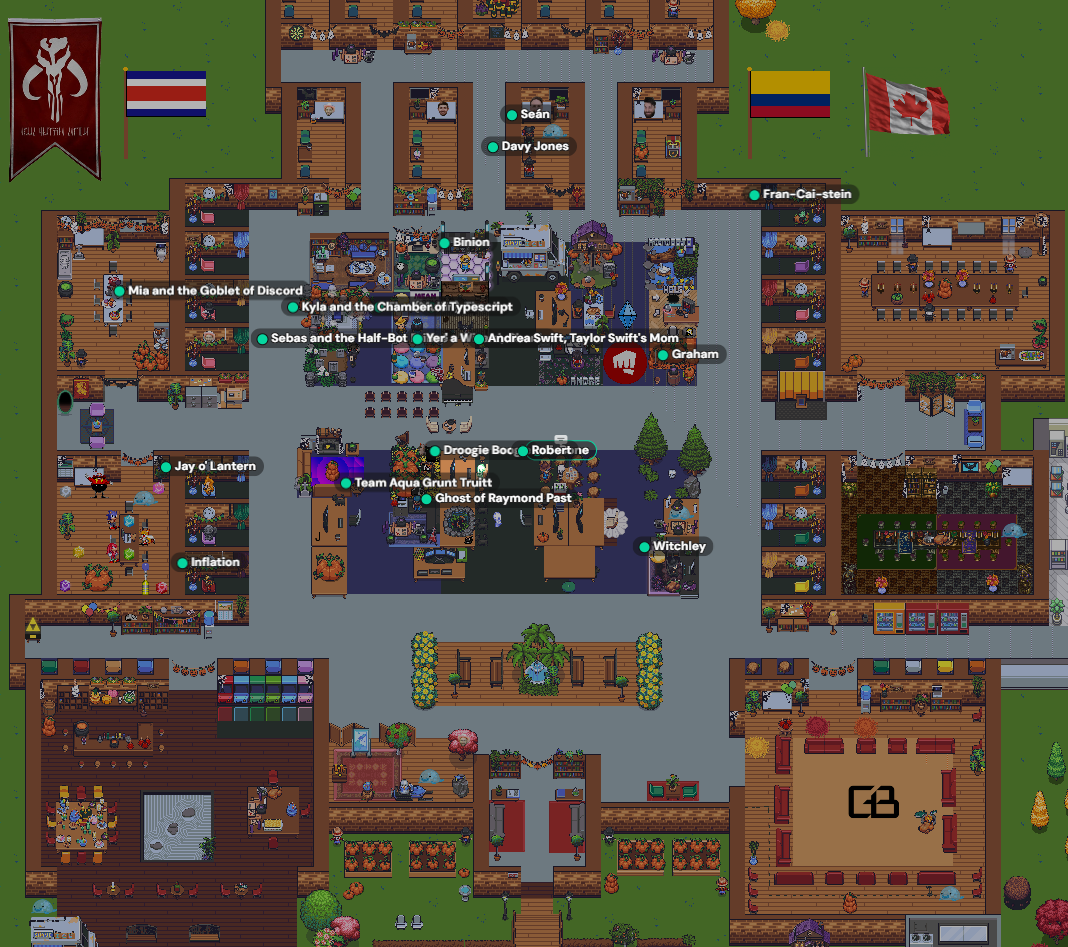
Proposed and actual floor plan for our virtual office upgrade.
Those rare cases notwithstanding, real-time remote was different in all the ways that mattered to us. Here is our take on a few common complaints about real-time remote and virtual offices.
That looks corny
I know right!? It's also the most fundamental and effective change to remote work I've ever heard of or experienced. A little childlike joy in the workplace is healthy for you, especially if you make games for a living.
Real-time Work is Inflexible
"If I have to be at my virtual desk all the time, I still can't run a load of laundry, take care of a screaming child, or let a plumber in during the work day."
First, let's all agree that those tasks are much easier to do from home than in the office. Even pre-pandemic, at in-person companies, I knew managers that gave people the flexibility to go home and do those things, and I knew managers who didn't. Yes, we want you to be available to collaborate during our core hours for the most part, but we all have lives, and we respect yours. Solving this was as easy as telling people those activities were ok, and that they should model that behavior to new hires. To me, flexibility is more of a culture problem than a working model problem.
My Manager is always over my Shoulder
This is a culture problem, not an office problem. See above.
Real-time Means Meeting Overload
"If you're basically operating the way you did in an office, with folks expected to work the same hours, what prevents you from ending up with the endless meetings that we experienced in-office?"
We fell into this pitfall ourselves as we expanded. In a reflection meeting earlier this year, somebody basically said, "The amount of time I spend in meetings is getting out of hand." They were right, of course. We took the ax to some meetings and their frequency, and saw immediate results.
The natural trend, as a company grows, is to create more formal communication. Boring recurring meetings are the easiest to hate, but the dreaded TPS Report is fully asynchronous and also a complete waste of time. For us, the goal is to spend our shared time in fun and effective ways.
We can always do better here, but the solutions to meeting overload are not new. Focus hours and calendar defragmentation are helpful tools, but I'm learning that the most important thing is to reinforce a culture of trust and iteration over approvals and blame. This is primarily on us as leaders to do better.
Why Real-time Remote Works for Us
Here are some foundational beliefs we hold at Gamebreaking:
- Relationships matter (having accessible mentors, both assigned & de facto, facilitates growth)
- Quicker turn-around beats higher throughput (we are heavily influenced by Lean / XP)
- Games are deeply creative & mind-bogglingly cross-disciplinary
- Hands-on mentorship is worth its weight in gold (pair programming, live code reviews, "writer's rooms," – anything where junior folks get to actively work alongside senior folks)
Article after article, talks about why these things are hard to achieve in an asynchronous remote environment. Async work can be successful in the right environment, but you have to want decoupled schedules and written communication as badly as we want spontaneity and live collaboration. We rearranged our entire company to make a real-time remote workplace…
…And people love it.
"I don't think I could work here without our office." – Wes, Intern
"All our best ideas come when we're still hanging out talking at the end of the day." – Andre, Manager
"Woah, I'm kinda super excited about this" – Candidate seeing our office (actually like… most candidates)
"This (virtual office) addresses a lot of the pain points of my previous remote job" – Min, Director